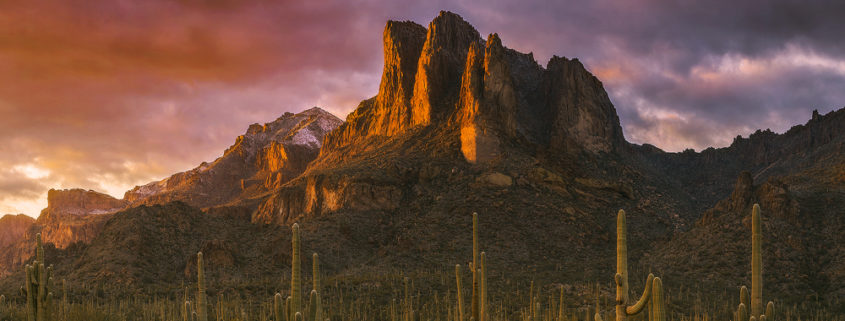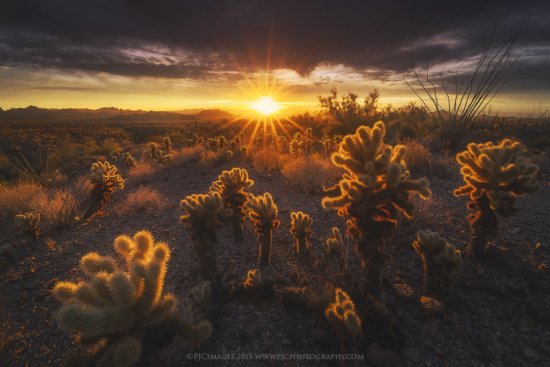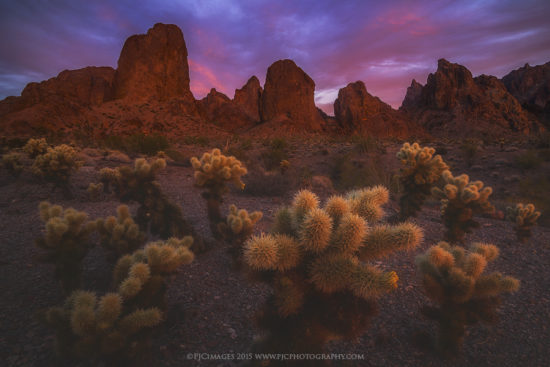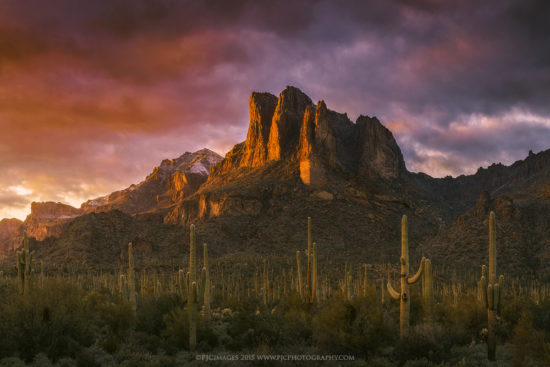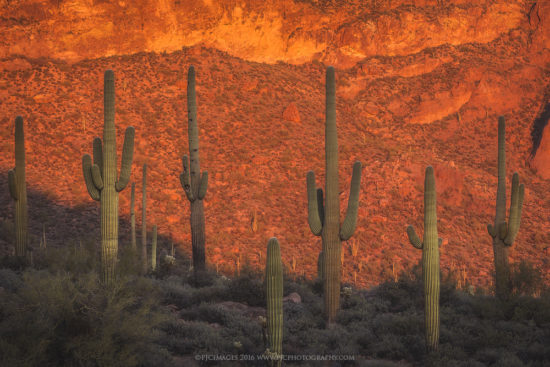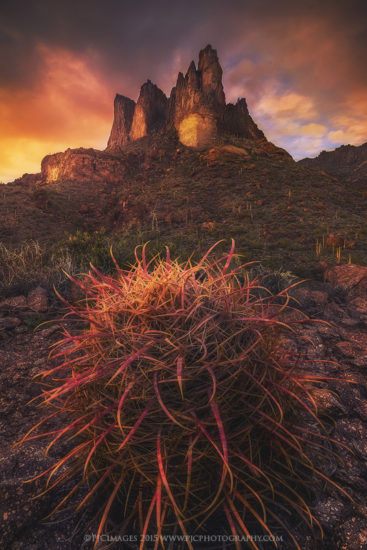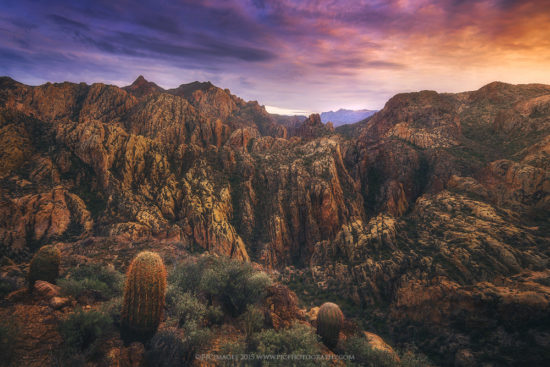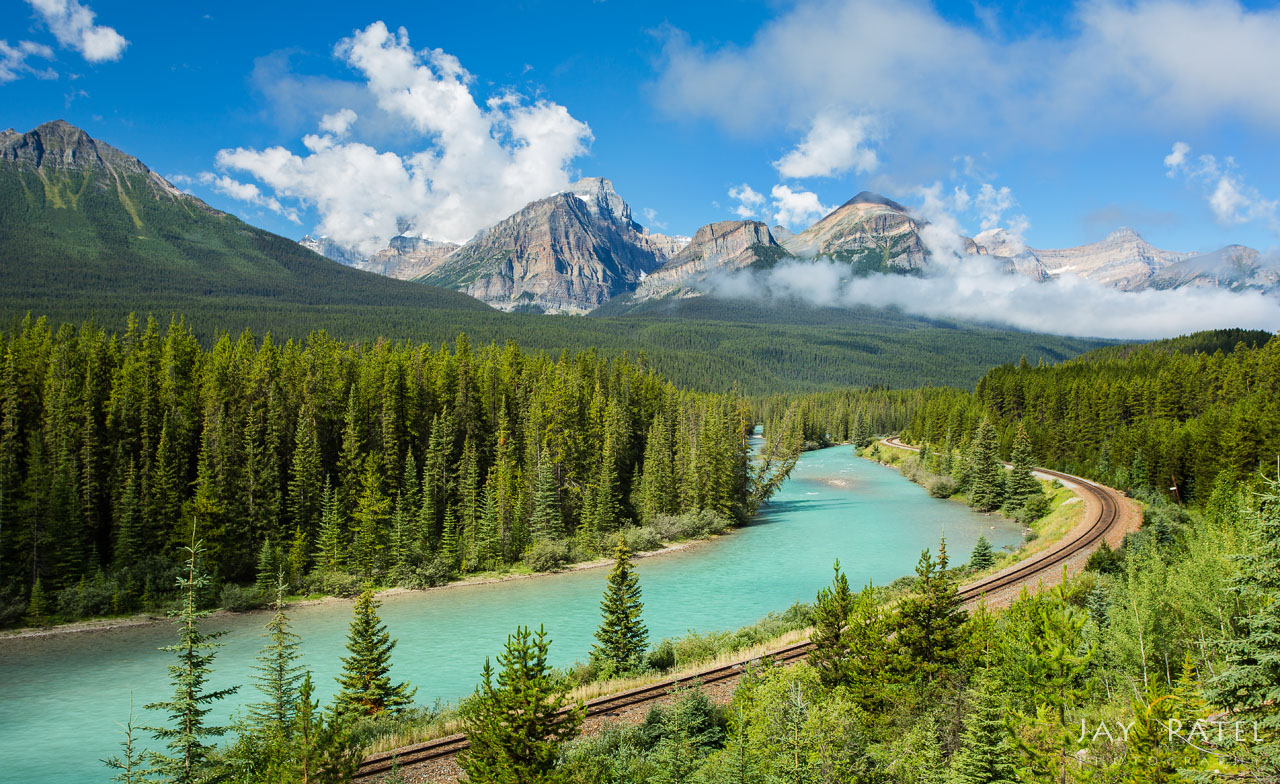Tips for Photographing Cactus
Some of my favorite photographic subjects are the variety of cactus plants that call the southwest home…I love photographing cactus. From the mighty Saguaro cactus to the deceitfully titled teddy bear Cholla, there are plenty to keep you busy both searching for and photographing. In this post, I explain a few helpful tips to maximize the use of some of the more common cacti in your landscape photographs as well as a few safety tips to keep in mind while out in the field.
Safety First: While many of the cactus found in the desert are beautiful to look at, they do pose some potential risks as you wander around the desert floor. The majority of these plants have very sharp needles that can easily pierce your skin with just a simple graze. The most obvious culprit is the teddy bear Cholla. They may look fluffy and cuddly but make no mistake… they are devilish plants if you aren’t careful. The slightest touch will have them clinging onto you in no time. Depending on the severity of such an encounter, it’s best to carry tweezers and even a comb in your pack to remove the needles and chunks of cactus. If you happen to forget either of these things, lens caps work on the fly as well as nearby sticks and rocks remove them. I have heard more horror stories regarding this type of cactus than any other and have encountered a number of issues of my own with them. Always watch your step when around any cactus. Some of these plants are only inches tall and can hide in plain sight. Aside from teddy bear Cholla, the mighty Saguaro can also prove to be dangerous. While they don’t tend to jump at you like those pesky Cholla, they are usually home to various critters (such as rattlesnakes) that can climb the creases and hide inside. There have also been bees, bobcats, and various birds that have called the inside of Saguaros home, so it’s best to make sure it looks clear before getting too close.
Photographing those pesky Cholla: Now that we have carefully navigated through dense Cholla avoiding any fallen cholla “pups” (the pieces which fall from the main plant), it’s time to find a pleasing composition and wait for the light. Teddy bear Cholla specifically have a knack for catching some incredible glow in their needles during the golden hour. My preference for photographing these plants is to shoot into the light. This allows the plants to glow and stand out in the image. Once the sun is below the horizon, the glow almost always completely goes away. It’s still there, but not nearly as vivid as when the sun is up. This is a good time to turn around and shoot those Cholla against a nice backdrop if one is available. Not only will you have an interesting foreground, but you also won’t have to worry about having your shadow in the photos. The two images below were photographed just feet apart and in completely opposite directions.
The Mighty Saguaro: Perhaps the most recognizable cactus on earth. It is synonymous with the desert southwest and is featured in almost every western movie. Due to their size, they can be slightly difficult to photograph. It may be strange to hear, but I have found using a zoom lens allows for a more creative approach to these plants. While you can use a wide-angle to photograph them, using a zoom lens can help compress them and create some great depth that a wide-angle just can’t do. In the image below, which is a stitched panoramic shot at 70mm, I used the strong verticals of the Saguaro as an anchor to direct the eye to the peak and sunset skies. This also showed off the depth of this scene with the rest of the saguaro skirting the peaks base.
Utilizing a zoom lens can also lend to some more intimate type images of Saguaro cacti. By compressing a row of them against a sunlit ridge, I was able to show a contrast in both color and shape.
The Barrels: Barrel cacti are some of my favorite to incorporate into a composition. They can be as tiny as a baseball and as tall as a human. They also have some of the most colorful needles of any cactus particularly after any kind of precipitation, so it’s best to search for them after a rain so that they can show off their brilliant colors. Unlike the teddy bear Cholla and Saguaro cacti, the barrel cactus is usually solitary with some scattered nearby. Many times, this lends itself to a more in-your-face wide angle approach, but if you can find a small grouping of them, they provide a great anchor and foreground to an image. Below are examples of the wide in-your-face approach, as well as using them in a complimentary way.

